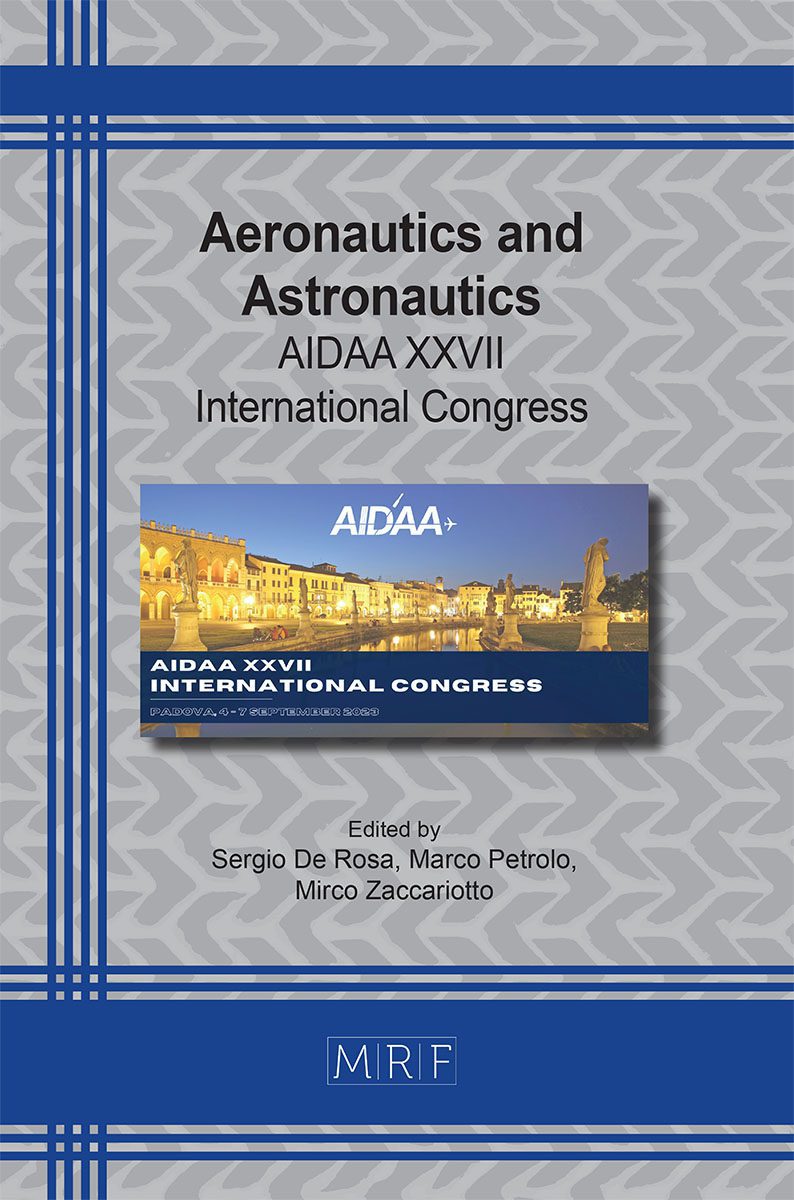Refinement of structural theories for composite shells through convolutional neural networks
Marco Petrolo, Pierluigi Iannotti, Mattia Trombini, Mattia Melis
download PDFAbstract. This study examines the use of Convolutional Neural Networks (CNN) to determine the optimal structural theories to adopt for the modeling of composite shells, to combine accuracy and computational efficiency. The use of the Axiomatic/Asymptotic Method (AAM) on higher-order theories (HOT) based on polynomial expansions can be cumbersome due to the amount of Finite Element Models (FEM) virtually available and the problem-dependency of a theory’s performance. Adopting the Carrera Unified Formulation (CUF) can mitigate this obstacle through its procedural and lean derivation of the required structural results. At the same time, the CNN can act as a surrogate model to guide the selection process. The network can inform on the convenience of a specific set of generalized variables after being trained with just a small percentage of the results typically required by the AAM. The CNN capabilities are compared to the AAM through the Best Theory Diagram (BTD) obtained using different selection criteria: errors over natural frequencies or failure indexes.
Keywords
CUF, Structural Theories, Neural Networks, FEM
Published online 11/1/2023, 5 pages
Copyright © 2023 by the author(s)
Published under license by Materials Research Forum LLC., Millersville PA, USA
Citation: Marco Petrolo, Pierluigi Iannotti, Mattia Trombini, Mattia Melis, Refinement of structural theories for composite shells through convolutional neural networks, Materials Research Proceedings, Vol. 37, pp 141-145, 2023
DOI: https://doi.org/10.21741/9781644902813-31
The article was published as article 31 of the book Aeronautics and Astronautics
![]() Content from this work may be used under the terms of the Creative Commons Attribution 3.0 license. Any further distribution of this work must maintain attribution to the author(s) and the title of the work, journal citation and DOI.
Content from this work may be used under the terms of the Creative Commons Attribution 3.0 license. Any further distribution of this work must maintain attribution to the author(s) and the title of the work, journal citation and DOI.
References
[1] F.B. Hildebrand, E. Reissner, G. B. Thomas, Notes on the foundations of the theory of small displacements of orthotropic shells, Technical Report, Massachusetts Institute of Technology, 1949.
[2] J. N. Reddy, A simple higher-order theory for laminated composite plates, Journal of Applied Mechanics, December 1984, 51(4) 745–752. https://doi.org/10.1115/1.3167719
[3] D. S. Mashat, E. Carrera, A. M. Zenkour, S. A. Al Khateeb, Axiomatic/asymptotic evaluation of multilayered plate theories by using single and multi-points error criteria, Composite Structures, 106 (2013) 393–406. https://doi.org/10.1016/j.compstruct.2013.05.047
[4] M. Petrolo, M. Cinefra, A. Lamberti, E. Carrera, Evaluation of mixed theories for laminated plates through the axiomatic/asymptotic method, Composites Part B: Engineering, 76 (2015) 260–272. https://doi.org/10.1016/j.compositesb.2015.02.027
[5] M. Petrolo, P. Iannotti, Best Theory Diagrams for Laminated Composite Shells Based on Failure Indexes, Aerotecnica Missili & Spazio, In Press. https://doi.org/10.1007/s42496-023-00158-5
[6] M. Petrolo, E. Carrera, Best Spatial Distributions of Shell Kinematics Over 2D Meshes for Free Vibration Analyses, Aerotecnica Missili & Spazio, 99 (2020) 217-232. https://doi.org/10.1007/s42496-020-00045-3
[7] S. Albawi, T. A. Mohammed, S. Al-Zawi, Understanding of a convolutional neural network, 2017 International Conference on Engineering and Technology (ICET), Antalya, Turkey, 2017. https://doi.org/10.1109/ICEngTechnol.2017.8308186
[8] E. Carrera, M. Cinefra, M. Petrolo, E. Zappino, Finite element analysis of structures through unified formulation, Wiley, Chichester, 2014. https://doi.org/10.1002/9781118536643
[9] Z. Hashin, Failure criteria for unidirectional fiber composites, Journal of Applied Mechanics, 47 (1980) 329–334. https://doi.org/10.1115/1.3153664































